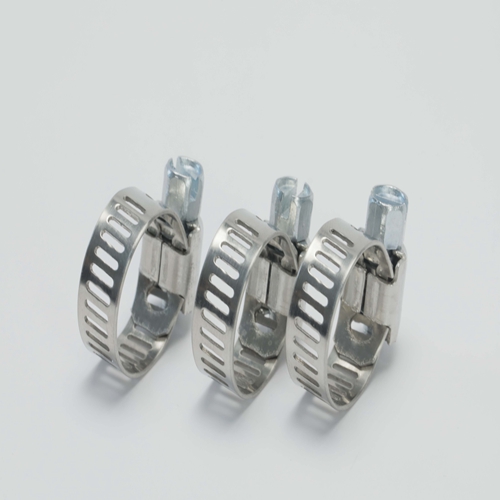- Phone:+86-17331948172 +86-0319-8862898
- E-mail: inquiry@puxingclamp.com
Nov . 11, 2024 02:28 Back to list
Hose Clamp Solutions for 3 to 8 Inch Hose Applications from Leading Manufacturers
Hose Clamps for 3/8 Hose A Comprehensive Guide for Manufacturers
Hose clamps are essential components in various industries, particularly in manufacturing, automotive, plumbing, and HVAC systems. Among the different sizes and types available, the 3/8 inch hose clamp is a popular choice due to its versatility and effectiveness. In this article, we will explore the significance of hose clamps for 3/8 hoses, the manufacturing process, materials used, and considerations for selecting the right hose clamp for your specific needs.
Importance of Hose Clamps in Various Industries
Hose clamps play a crucial role in securing hoses to fittings. They provide the necessary tightness to prevent fluid leakage, which can lead to system inefficiencies, environmental hazards, or costly repairs. In automotive applications, for instance, a reliable hose clamp ensures that coolant and fuel systems function seamlessly. In industrial settings, they help maintain the integrity of pneumatic and hydraulic systems.
The 3/8 inch hose size is commonly used for various applications, including irrigation systems, drainage, fuel lines, and air delivery systems, making it essential for manufacturers to understand the specific requirements for these clamps.
Types of Hose Clamps
Manufacturers produce several types of hose clamps, each designed for different applications and hose materials. The most common types include
1. Band Clamps These are versatile and can be adjusted to fit various hose diameters. They provide a uniform distribution of pressure around the hose, ensuring a secure fit.
2. Screw and Bolt Clamps These clamps utilize a screw or bolt mechanism to tighten the band around the hose. They are commonly used in applications where a strong hold is necessary.
3. Spring Clamps These clamps use a spring mechanism to maintain constant pressure on the hose. They are ideal for applications where movement or vibration can loosen a standard clamp.
4. Ear Clamps Often used in automotive applications, ear clamps are crimped around the hose and provide a secure fit without needing a screw or bolt.
Manufacturing Process
The manufacturing of hose clamps typically involves several steps
1. Material Selection Most hose clamps are made from stainless steel, carbon steel, or plastic, depending on the application requirements. Stainless steel is favored for its corrosion resistance and durability.
hose clamp for 3 8 hose manufacturer

2. Cutting The selected material is cut into strips that will form the clamp. Precision in cutting ensures consistent quality during the assembly.
3. Shaping The strips are shaped into bands. During this process, holes or slots may be added to allow for tightening mechanisms.
4. Finishing The finished bands often undergo treatments such as galvanization or coating to enhance corrosion resistance and overall durability.
5. Assembly The components, including any necessary screws, springs, or bolts, are assembled according to the design specifications.
6. Quality Control Finally, each batch of hose clamps undergoes rigorous quality checks to ensure they meet industry standards and performance specifications.
Considerations for Selecting Hose Clamps
When choosing hose clamps for 3/8 hoses, manufacturers should consider several factors
1. Material Compatibility Ensure that the material of the hose clamp is compatible with the hose and the fluids it will carry. For example, corrosive fluids may require stainless steel clamps to prevent degradation.
2. Size and Fit Hose clamps must match the hose size precisely. An ill-fitting clamp can lead to leaks, while an overly tight clamp can damage the hose.
3. Application Environment Consider the environment in which the clamp will be used. High-temperature applications may require special high-temperature resistant materials, while outdoor applications may benefit from UV-resistant coatings.
4. Ease of Installation Select hose clamps that are easy to install and adjust. This is particularly important in automotive or industrial applications where maintenance is routine.
5. Cost Efficiency While quality is paramount, manufacturers must also consider the cost-effectiveness of their hose clamps to maintain competitive pricing.
Conclusion
Hose clamps for 3/8 hoses are vital components in a range of applications. Understanding the different types, manufacturing processes, and selection criteria can help manufacturers produce reliable products that meet the needs of their customers. By focusing on quality and compatibility, manufacturers can enhance the performance of their hoses and ensure the longevity of their systems. In an industry where dependability is critical, investing in the right hose clamps is not just an option—it's a necessity.
-
High-Quality Steel Plate Midsole - Trusted Factory & Suppliers for Safety Footwear
NewsJul.06,2025
-
High-Quality Stainless Steel Slit Coil Supplier & Factory – Precision Slitting, OEM Service
NewsJul.06,2025
-
High-Quality Hose Clamps Mini Clamp – Reliable Factory & Leading Suppliers
NewsJul.05,2025
-
High-Quality Steel Plate Midsole Leading Steel Plate Midsole Factories & Suppliers
NewsJul.05,2025
-
Adjustable Pipe Tube Clip – High-Quality, Durable & Versatile Clamps for Industrial Use
NewsJul.05,2025
-
German Style Hose Clamp Manufacturer Quick Lock Worm Gear Hose Clamp Supplier
NewsJul.04,2025




